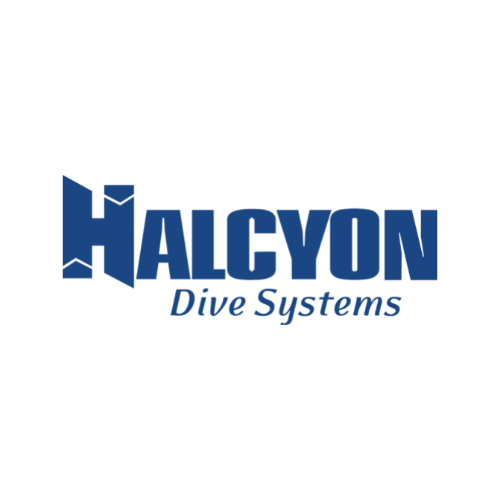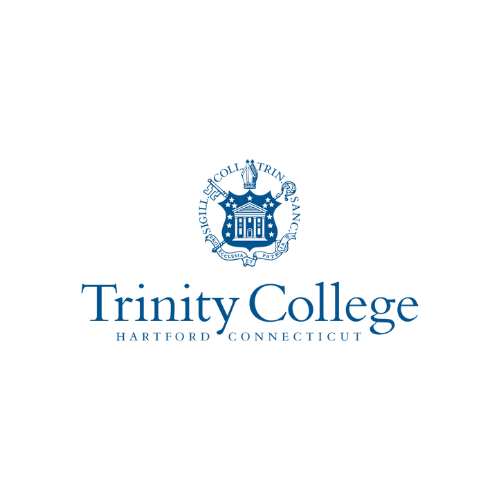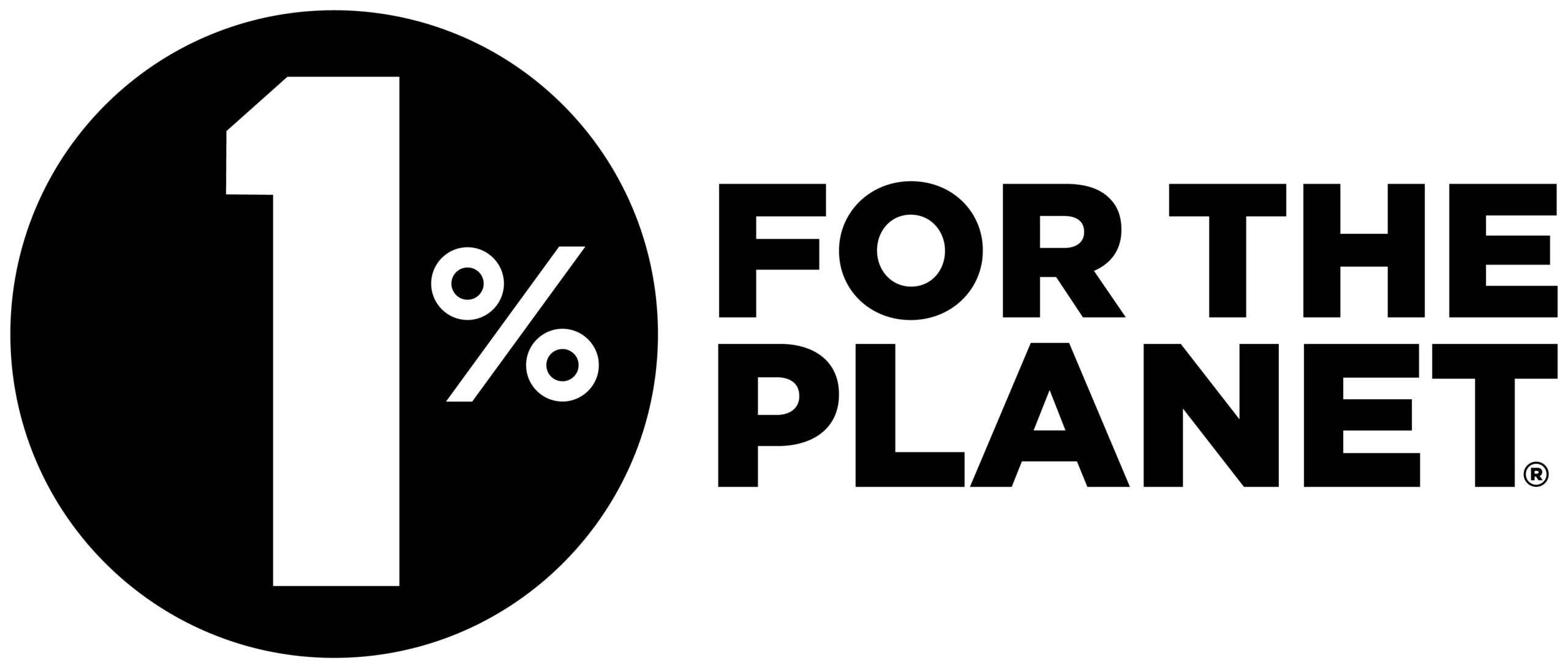Collaborations
Project Baseline is working at its highest capacity when actively engaged with other scientific, government, or conservation organizations in ways that further established efforts to understand, restore, or protect underwater environments. Our goal is to foster these types of collaborations at the local levels through the work of our teams, and at the global level through the work of our missions.
“The Project Baseline team accomplished more for us in two weekends than we could have accomplished in five field seasons working on our own.” - Annie Caires, University of Nevada Limnology Lab
We’re very proud to have worked with the following organizations in pursuit of this goal.
GUE began as a dream shared by a small and close-knit group of college friends, scuba instructors, and cave divers in which exploration and conservation projects are engaged by a worldwide community of divers rather than the elite few. To realize that dream, GUE focused on and became a world leader in team-centered diver training. GUE’s success, we believe, stems largely from the continued dedication to that dream and the incorporation of purpose into GUE’s courses. Twenty years after its inception, GUE’s dream has become a shared purpose for tens of thousands of divers across the world.
Project Baseline is the offspring of GUE’s commitment to conservation and steadfast belief in the dream. Project Baseline was started in 2009 when some of GUE’s leaders realized that they’d fallen into the category of elder divers lamenting the degradation and loss of once stunningly beautiful underwater places due to the seemingly inevitable decline associated with progress and development. The idea for Project Baseline was quite simply a refusal to submit to that notion of inevitability.
By 2019, it became clear that in order to clearly demonstrate PB’s commitment to working with all divers and non-divers alike in the pursuit of conservation, the time had come to establish the Project Baseline effort as an independent exclusively conservation-focused 501(c)(3) non-profit organization.
GUE continues to sponsor Project Baseline both monetarily and through the incorporation of the Project Baseline mission into their training programs and messaging. Project Baseline also continues to seek participation from GUE-trained divers for our collaborative missions.
Learn More: GUE Website
Beginning in 2013, Project Baseline entered into an ongoing collaboration with GlobalSubDive through which our Board member and long-time supporter, Robert Carmichael secured funding to support scientific exploration and documentation missions using combinations of volunteer divers, submersibles, and offshore support vessels. Since then, GSD has negotiated continued access to a variety of submersibles and vessels as well as state-of-the-art technical diving support systems and equipment that are made available for Project Baseline missions at substantially reduced rates. Project Baseline leverages the reductions as matching funds to develop expeditionary missions with our scientific and conservation collaborators.
Learn More: Global Sub Dive Website
Aotearoa Lake Mission Statement
We are a group of passionate volunteers and trained professionals who want to understand and improve New Zealand’s lakes. Our focus is to collaboratively gather environmental data to support government and research organizations. We use community members, citizen science and emerging technologies to collect data for tangible ecological outcomes. Education is a key value for us as an organization and we also provide training to empower local communities to restore their local lakes and freshwater systems.
Learn more: AOTEAROA LAKES
Project Baseline worked with BOEM in collaboration with NOAA’s Office of National Marine Sanctuaries and GlobalSubDive during our 2016 mission to North Carolina to document vessels that were sunk during the WWII Battle of the Atlantic. Our team conducted submersible and technical scuba dives 30 miles offshore of Ocracoke North Carolina in an area known as the Graveyard of the Atlantic. We documented the wrecks of the German U-boat U-576 and its last victim, the freighter Bluefields, as well as the wreck of the fishing vessel, recruited to serve as a warship, YP-389 during the early years of the war. Our teams collected data and imagery that were used to develop detailed 3D laser and photogrammetric models of the wrecks.
Point of Contact: William Hoffman - NOAA Team
Learn More:
Dive for Antibiotics - PhD student Emily Addington is carrying our research to identify new strains of antibiotics, with a focus on marine samples. She recently ran a competition for local divers to submit samples from their chosen dive sites, with the results regularly posted on her Facebook and Instagram pages.
The inspiration for the foundation of Project Baseline grew from a 10-year research project (2002 - 2012) led by Dr. Todd Kincaid (GeoHydros, LLC, Global Underwater Explorers - Woodville Karst Plain Project, and Project Baseline), Dr. Rodney Dehan (Florida Geological Survey), Dr. David Loper (Florida State University - Geophysical Fluid Dynamics Institute), and Jarrod Jablonski and Casey McKinlay (Global Underwater Explorers - Woodville Karst Plain Project); and supported by FGS staff and countless volunteers. Together, the team systematically mapped caves and conduits constituting the Wakulla-Leon Sinks Cave System, which is now the longest cave in North America, and established connections between Wakulla Springs, the City of Tallahassee’s storm-water and wastewater runoff, as well as springs along the coast of the Gulf of Mexico. Their work led to a 220 million dollar investment in improved wastewater treatment, as well as numerous County ordinances that have contributed to improved water quality and ecological conditions at Wakulla Springs. Their success demonstrated the substantial power of citizen-science-government collaborations for the development and implementation of sustainable ecosystem management.
Point of Contact: Dr. Jon Arthur - FGS
Learn More:
Project Baseline worked with the Bahamas Caves Research Foundation during our 2014 mission to the Bahamas. Our team conducted video and water chemistry surveys in four Blue Holes on and offshore of South Andros Island.
Point of Contact: Brian Kakuk - BCRF
Learn More: Bahamas Cave Research Foundation Website
Project Baseline’s team in Auckland New Zealand, PB-Lake Pupuke led by Ebrahim Hussain, is working with the Auckland Council to document water quality trends in Lake Pupuke, which is near the center of the city of Auckland and is regularly used for recreational purposes as well as national and international sporting events. Their work is contributing to the Auckland Council’s Lake Pupuke management plan and the Regional Lakes Monitoring Program, with the goal of helping the people of Auckland make better informed decisions on the long term management of local water bodies.
Point of Contact: Ebrahim Hussain - LinkedIn
Learn More:
Project Baseline worked with BIOS in collaboration with Nekton and GlobalSubDive during our 2016 mission to Bermuda. Our team conducted 32 technical scuba dives and 77 submersible dives during which they collected video, still images, coral, algae, and water samples along 65 transects in depths between 120 and 300 meters and along 73 transects in depths between 15 and 90 meters; and assisted researchers with the deployment and retrieval of specialized sampling equipment.
Point of Contact: Dr. Gretchen Goodbody-Gringley - BIOS
Learn More:
-
- PB Mission Summary Video
- PB Mission Report
- Nekton Mission Report
- BIOS Website
Project Baseline conducted a mission with the Miami Waterkeeper, GlobalSubDive, and Phillipe Cousteau in 2016 to document coral reef conditions near Port Everglades, Fort Lauderdale Florida in advance of a proposed expansion project that threatens to further degrade Florida’s coral reefs, and to bring public attention to the condition of Florida’s coral reefs and the causes of their decline.
Point of Contact - Dr. Rachael Silverstein - MWK
Learn More:
Project Baseline participated in four collaborative missions with HBOI and GlobalSubDive in 2014 and 2015. Two of the missions focused on documenting mesophotic coral (Oculina varicosa) reefs that live in low light conditions between 60 and 100 meters water depth along Florida’s east coast between Fort Pierce and Port St. Lucie and that had been previously studied by HBOI in the 1990’s. Project Baseline divers conducted video transects at locations where Oculina varicosa had been previously documented that revealed substantial loss of coral cover potentially due to dredge and trawl fishing practices despite being designated as marine protected areas.
The other two missions focused on documenting and collecting algae from shallower coral reefs in 15 and 30 meters water depth between West Palm Beach and Looe Key. Project Baseline divers conducted video transects, collected algae samples from the coral beds, and collected water samples and video from five wastewater outfalls. Results confirmed and brought public attention to what was already known in the scientific community, that Florida has lost 90% or more of its living coral cover due, in part to nutrient pollution from wastewater and agricultural runoff.
Point of Contact - Oculina: Dr. Joshua Voss - HBOI-VossLabs
Point of Contact - Algae: Dr. Brian Lapointe - HBOI
Learn More - Oculina:
Learn More - Algae/Eutrophication:
Project Baseline has conducted two projects with NOAA’s Office of National Marine Sanctuaries; one in collaboration with BOEM and GlobalSubDive during our 2016 mission to North Carolina to document vessels that were sunk during the WWII Battle of the Atlantic; and one to Thunder Bay NMS in Lake Michigan to conduct photogrammetric surveys of shipwrecks within the NMS and to prepare for future missions to explore new shipwreck targets that NOAA has identified through bathymetric and sidescan surveys.
In North Carolina, our team conducted submersible and technical scuba dives 30 miles offshore of Ocracoke North Carolina in an area known as the Graveyard of the Atlantic. We documented the wrecks of the German U-boat U-576 and its last victim, the freighter Bluefields, as well as the wreck of the fishing vessel, recruited to serve as a warship, YP-389 during the early years of the war. Our teams collected data and imagery that was used to develop detailed 3D laser and photogrammetric models of the wrecks. In Lake Michigan, our team conducted photogrammetric surveys of the wreck of the wooden steam barge Montana.
Point of Contact - Battle of the Atlantic: Joe Hoyt - LinkedIn
Point of Contact - Thunder Bay: Stephanie Gandula - LinkedIn
Learn More - Battle of Atlantic:
Learn More - Thunder Bay:
Project Baseline’s team in Wellington New Zealand, PB-Wellington led by Nicole Miller, is working with the Mountains to Sea Wellington Trust to communicate the importance of seaweed as ecosystems. In 2018, the team supported the Yr 9 and Yr10 Seaweed Action Projects run by Mountains to Sea Wellington Trust. As part of the program college students got to experience what a kelp forest looks like above and beneath the ocean´s surface and how new technologies can be applied for seaweed monitoring and conservation. Read More Here.
Project Baseline has worked with NSU on two missions; one in collaboration with GlobalSubDive aimed at documenting shipwrecks as artificial reefs off the east coast of Florida; and another in collaboration with the University of the South Pacific (USP) that documented coral distributions and health within the Great Astrolabe Reef that encircles the island of Kandavu, Fiji. For the first mission, Project Baseline divers performed video transects to support fish counts along the length of the wreck of the St. Lawrence located in 60 meters water depth off the coast of Fort Lauderdale; and with GlobalSubDive’s submersibles to carry researchers down to the wreck to conduct independent surveys.
For the second mission, Project Baseline secured access to the m/y AdVantage and its 1000-m submersible and provided those resources in conjunction with a technical dive team to conduct vertical, stereo video and benthic transects. Vertical transects were performed with the submersible to a maximum depth of ~350 meters. Horizontal transects were 50-m in length and conducted at several sites at ~30, 20, and 10m water depths. Data collected from the mission is being used to support Ph.D. dissertation research at NSU. Coral and algae samples were curated and provided to USP.
In addition to these missions, Dr. Brian Walker of NSU is publically sharing his research data using the Project Baseline database and online interface.
Point of Contact: Dr. Brian Walker, NSU - NSU
Point of Contact: Dr. Charles Messing, NSU - NSU
Point of Contact: Dr. Ciro Rico, USP - USP
Learn More:
Project Baseline worked with Dr. Thea Popolizio of Salem State University in collaboration with Nekton and GlobalSubDive during our 2016 mission to Bermuda. Our team conducted 32 technical scuba dives and 77 submersible dives during which they collected video, still images, coral, algae, and water samples along 65 transects in depths between 120 and 300 meters with the submersibles and along 73 transects in depths between 15 and 90 meters with technical divers; and assisted researchers with the deployment and retrieval of specialized sampling equipment. Our work for Dr. Popolizio focused on the collection of algae samples from the transect depths.
Point of Contact: Dr. Thea Popolizio - Salem State Univ.
Learn More:
-
- PB Mission Summary Video
- Algae Video
- PB Mission Report
- Nekton Mission Report
- Salen State University Website
Seasearch - A UK based organisation that educates divers in underwater survey and species identification. This allows divers to submit survey forms and for areas of scientific interest to be identified and further investigated - Learn More.
Project Baseline worked with Heidi Hirsh, Ph.D. candidate at Stanford University in collaboration with Nekton and GlobalSubDive during our 2016 mission to Bermuda. Our team conducted 32 technical scuba dives and 77 submersible dives during which they collected video, still images, coral, algae, and water samples along 65 transects in depths between 120 and 300 meters with the submersibles and along 73 transects in depths between 15 and 90 meters with technical divers; and assisted researchers with the deployment and retrieval of specialized sampling equipment. Our work for Heidi focused on the deployment and retrieval of a specialized piece of water sampling equipment called the Benthic Ecosystem Acidification Monitoring System (BEAMS) at multiple locations near our Bermuda dive sites.
Point of Contact: Heidi Hirsh - Stanford Univ.
Learn More:
Project Baseline worked with Dr. Craig Schneider of Trinity College in collaboration with Nekton and GlobalSubDive during our 2016 mission to Bermuda. Our team conducted 32 technical scuba dives and 77 submersible dives during which they collected video, still images, coral, algae, and water samples along 65 transects in depths between 120 and 300 meters with the submersibles and along 73 transects in depths between 15 and 90 meters with technical divers; and assisted researchers with the deployment and retrieval of specialized sampling equipment. Our work for Dr. Schneider focused on the collection of algae samples from the transect depths.
Point of Contact: Dr. Craig Schneider - Trinity College
Learn More:
-
- PB Mission Summary Video
- Algae Video
- PB Mission Report
- Nekton Mission Report
- Trinity College Website
Project Baseline worked with Dr. Joana Ruela Heimbürger Boavida in collaboration with the Universidade do Algarve and GlobalSubDive to document the distribution of red coral (Corallium rubrum) in water depths of between 60 and 100 meters off the south coast of Portugal (Algarve). Our team conducted five exploratory dives at four sites off Lagos-Portimão during which they collected video documentation of the coral assemblages and coral samples for subsequent analyses. Published outcomes include: extended knowledge of the distribution of Corallium rubrum in the Atlantic; discovery of a rich deep-dwelling fauna associated to these coral assemblages; identification of the barrier role of the Atlantic-Mediterranean transition zone; verification of the urgent need for protection of Corallium rubrum from direct and indirect fishing activities.
Point of Contact: Dr. Joana Ruela Heimbürger Boavida - ResearchGate
Learn More:
Project Baseline, in collaboration with GlobalSubDive, worked with a team of marine biologists from the University of the Azores led by Dr. Pedro Ribiero in 2014 to document the distribution of black corals in the mesophotic zone along the slopes of several islands and seamounts comprising the Azores archipelago. Our team conducted several technical scuba dives at six locations distributed across the Azores archipelago during which they collected video surveys and coral specimens, all of which were contributed to our research partners at the University of the Azores.
Point of Contact: Dr. Pedro Ribiero - LinkedIn
Point of Contact: Valentina Matos - LinkedIn
Learn More:
Project Baseline’s team in Lake Tahoe Nevada led by Martin McClellan is working with a research team from the Limnology & Aquatic Ecology Lab at the University of Nevada - Reno led by Dr. Sudeep Chandra to document the distribution of the native macroalgae chara, as an indicator for water clarity changes over time. Martin’s team has conducted numerous video surveys at several depth ranges, including a circumnavigation of Lake Tahoe at ~5 meters depth, dives to depths of 60 meters, and several others in between. Annie Caires, lab manager for Dr. Chandra’s research team described our teams work best: “The Project Baseline team accomplished more for us in two weekends than we could have accomplished in five field seasons working on our own.”
Point of Contact - Project Baseline Team Leader: Martin McClellan - LinkedIn
Point of Contact - UNR: Dr. Sudeep Chandra - UNR
Learn More
- PB-Lake Tahoe Video
- PB-Lake Tahoe
- PB-Lake Tahoe Data
- UNR-Research Report
- University of Nevada, Reno Website
Project Baseline collaborated with Nekton and GlobalSubDive in 2016 to conduct Nekton’s first mission, the XL Catlin Deep Ocean Survey in Bermuda for which Dr. Alex Rogers of the University of Oxford was the Chief Scientist. Our team conducted 32 technical scuba dives and 77 submersible dives during which they collected video, still images, coral, algae, and water samples along 65 transects in depths between 120 and 300 meters and along 73 transects in depths between 15 and 90 meters; and assisted researchers with the deployment and retrieval of specialized sampling equipment. Outcomes included: confirmation of the discovery of the Rariphotic Zone - the Rare Light Zone – in depths from 130m to 300m; over 100 new species discovered; new multi-disciplinary research protocol to study the State of the Ocean – GOSSIP –The General Ocean Survey and Sampling Iterative Protocol (GOSSIP) - that aims to help transform understanding of the distribution patterns of deep sea life – and the environmental factors that influence them; 8 scientific papers published to date from the Bermuda Mission with 12 more in train; publication of new Identification Guide for Bermuda; and curation of all specimens and samples from the Bermuda Mission in collections at the Bermuda Aquarium, Museum & Zoo.
Specifically, our work for the University of Oxford included performing four 50-meter stereo video transects and four benthic video transects at 90, 60, 30, and 15 meters water depth at five different sites along the southern flank of the Bermuda rise; and collecting water samples for Dr. Catherine Head to support her work on the use of environmental DNA to catalog species distributions.
Point of Contact - University of Oxford: Dr. Alex Rodgers, Chief Scientist - Univ. Oxford
Point of Contact - University of Oxford: Dr. Catherine Head - Univ. Oxford
Learn More:
-
- PB Mission Summary Video
- PB-DNA Video
- PB Mission Report
- Nekton Mission Report
- The Telegraph
- University of Oxford Website
Project Baseline worked with Dr. Nikolaos Schizas of the University of Puerto Rico in collaboration with Nekton and GlobalSubDive during our 2016 mission to Bermuda. Our team conducted 32 technical scuba dives and 77 submersible dives during which they collected video, still images, coral, algae, and water samples along 65 transects in depths between 120 and 300 meters with the submersibles and along 73 transects in depths between 15 and 90 meters with technical divers; and assisted researchers with the deployment and retrieval of specialized sampling equipment. Our work for Dr. Schizas focused on the collection of coral and sponge samples to support his work on crypto fauna associated with corals and sponges.
Point of Contact: Dr. Nikolaos Schizas - Univ. Puerto Rico
Learn More:
Project Baseline developed a mission to Fiji by securing access to the m/y AdVantage and its 1000-m submersible and providing those resources in conjunction with a technical dive team to the University of the South Pacific and Nova Southeastern University. We worked with Dr. Ciro Rico and group of Ph.D. and post-doctoral students from USP and Dr. Brian Walker and Dr. Charles Messing from Nova to document coral health and fish communities along the Great Astrolabe Reef off the island of Kandavu and the barrier reefs off the island of Malolo in Fiji. Our team conducted vertical, stereo video, and benthic video transects, while also supporting underwater investigations performed by Dr. Rico and Dr. Walker. Vertical transects were performed with the submersible to a maximum depth of ~350 meters. Horizontal transects were 50-m in length and conducted at several sites at ~30, 20, and 10m water depths. Data collected from the mission is being used to support Ph.D. dissertation research at NSU. Coral and algae samples were curated and provided to USP.
Point of Contact: Dr. Ciro Rico, USP - USP
Point of Contact: Dr. Brian Walker, NSU - NSU
Point of Contact: Dr. Charles Messing, NSU - NSU
Learn More:
Project Baseline collaborated with Nekton and GlobalSubDive in 2016 to conduct Nekton’s first mission, the XL Catlin Deep Ocean Survey in Bermuda with the objective of initiating an Index for Ocean Health developed by the University of Oxford. Our team conducted 32 technical scuba dives and 77 submersible dives during which they collected video, still images, coral, algae, and water samples along 65 transects in depths between 120 and 300 meters and along 73 transects in depths between 15 and 90 meters; and assisted researchers with the deployment and retrieval of specialized sampling equipment. Outcomes included: confirmation of the discovery of the Rariphotic Zone - the Rare Light Zone – in depths from 130m to 300m; over 100 new species discovered; new multi-disciplinary research protocol to study the State of the Ocean – GOSSIP –The General Ocean Survey and Sampling Iterative Protocol (GOSSIP) - that aims to help transform understanding of the distribution patterns of deep sea life – and the environmental factors that influence them; 8 scientific papers published to date from the Bermuda Mission with 12 more in train; publication of new Identification Guide for Bermuda: to aid marine biologists, divers and naturalists with the identification of organisms; and curation of all specimens and samples from the Bermuda Mission in collections at the Bermuda Aquarium, Museum & Zoo.
Point of Contact - Nekton: Oliver Steeds, Nekton Mission Director - Nekton
Point of Contact - University of Oxford: Dr. Alex Rodgers, Chief Scientist - University of Oxford
Learn More:
Halcyon began as a group of divers who knew exactly
what they wanted but couldn't find it in a dive store. Our passion for
diving led us to designing wings and lights to satisfy ourselves. We
soon discovered that we were not alone in our pursuit of equipment that
could radically improve every diver's comfort; from the newest
recreational diver to supporting divers doing the most aggressive
technical dives ever completed. Our founders, owners, and senior
management have a long history as diving pioneers, with diverse
backgrounds, ranging from academia to manufacturing to consulting. They
all share one common thread: each of their log books records of an
average of 20 years of diving. Learn more at Halcyon.com


























